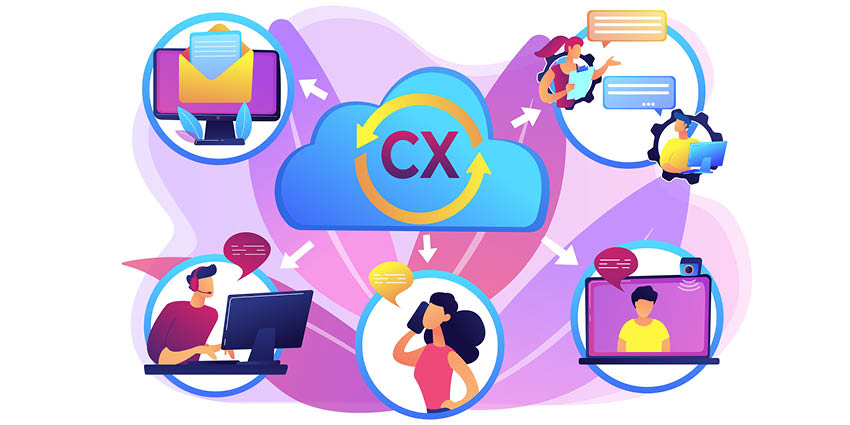In today’s highly competitive business landscape, customer experience (CX) has emerged as a critical differentiator. It encompasses every interaction a customer has with a brand, spanning across various touchpoints such as online platforms, physical stores, and customer service interactions.
What Is Customer Experience?

Customer experience directly impacts brand perception, customer loyalty, and ultimately, the bottom line. A positive experience can lead to repeat purchases, positive word-of-mouth referrals, and increased brand advocacy. Conversely, a negative experience can result in customer churn and reputational damage.
Components of a Positive Customer Experience
1. Accessibility and Convenience
Customers expect seamless access to products and services across multiple channels, including websites, mobile apps, social media, and brick-and-mortar stores. Providing convenient access enhances satisfaction and encourages repeat business.
2. Personalization and Customization
Personalized experiences tailored to individual preferences make customers feel valued and understood. By leveraging customer data and insights, businesses can deliver targeted recommendations, promotions, and content that resonate with each customer.
3. Effective Communication Channels
Open and transparent communication builds trust and fosters stronger relationships with customers. Offering multiple communication channels such as live chat, email, phone support, and social media ensures that customers can reach out for assistance whenever they need it.
4. Timely Resolution of Issues
Promptly addressing customer concerns and resolving issues demonstrates a commitment to customer satisfaction. Empowering frontline staff with the authority and resources to resolve issues efficiently can turn negative experiences into positive ones.
The Role of Technology in Enhancing CX
Advancements in technology have revolutionized the way businesses interact with customers. AI-powered chatbots, predictive analytics, and CRM systems enable personalized interactions, predictive insights, and proactive problem resolution.
Strategies for Improving Customer Experience
1. Understanding Customer Needs and Preferences
Investing in market research and customer feedback mechanisms helps businesses gain insights into customer preferences, pain points, and expectations. By understanding customer needs, businesses can tailor their products, services, and experiences accordingly.
2. Implementing Feedback Mechanisms
Regularly soliciting feedback from customers through surveys, reviews, and social media channels provides valuable insights for improvement. Actively listening to customer feedback and addressing concerns demonstrates a commitment to continuous improvement.
3. Empowering Frontline Staff
Equipping frontline employees with the training, resources, and autonomy to deliver exceptional service empowers them to exceed customer expectations. Investing in employee development and recognition fosters a customer-centric culture within the organization.
4. Leveraging Data Analytics
Harnessing data analytics tools and techniques enables businesses to analyze customer behavior, identify trends, and predict future needs. Data-driven insights inform strategic decision-making and enable targeted marketing campaigns and product innovations.
Case Studies: Successful Implementation of CX Strategies
Case Study 1: Amazon
Amazon’s relentless focus on customer experience is evident in its seamless shopping experience, personalized recommendations, and efficient delivery services. By leveraging data analytics and AI, Amazon anticipates customer needs and delivers unparalleled convenience.
Case Study 2: Apple
Apple’s commitment to user-centric design and intuitive interfaces has earned it a devoted customer base. From product design to customer support, Apple prioritizes simplicity, elegance, and ease of use, creating memorable experiences that resonate with customers.
Challenges in Delivering Exceptional CX
Despite the benefits of prioritizing customer experience, businesses face numerous challenges, including resource constraints, legacy systems, and evolving customer expectations. Overcoming these challenges requires a holistic approach, involving cross-functional collaboration, innovation, and a customer-first mindset.
Conclusion
In today’s competitive landscape, delivering exceptional customer experiences is no longer optional—it’s essential for long-term success. By prioritizing accessibility, personalization, communication, and problem resolution, businesses can build strong relationships with customers and differentiate themselves in the marketplace.
Ready to revolutionize your customer experience? Request a demo from AIM Technologies today and discover how our innovative solutions can elevate your customer interactions to new heights.
FAQs
What is customer experience (CX)?
- Customer experience encompasses every interaction a customer has with a brand, including pre-purchase, purchase, and post-purchase interactions.
Why is customer experience important for businesses?
- Customer experience directly impacts customer satisfaction, loyalty, and brand perception, influencing purchasing decisions and long-term relationships.
How can businesses improve customer experience?
- By prioritizing accessibility, personalization, effective communication, and timely issue resolution, businesses can enhance the overall customer experience.
What role does technology play in enhancing customer experience?
- Technology enables businesses to automate processes, personalize interactions, analyze data, and deliver seamless experiences across multiple channels.
What are some common challenges in delivering exceptional customer experiences?
- Challenges include resource constraints, legacy systems, evolving customer expectations, and organizational silos, which require strategic planning and innovative solutions to overcome.




